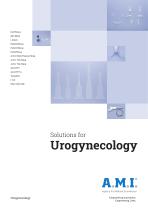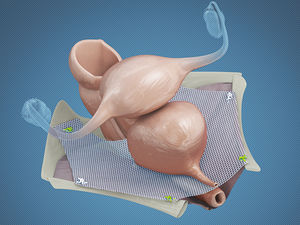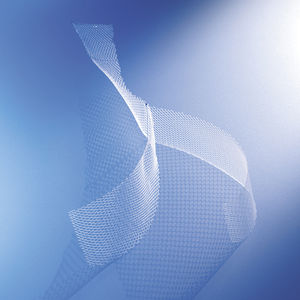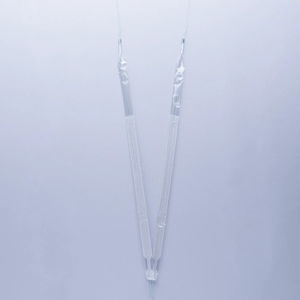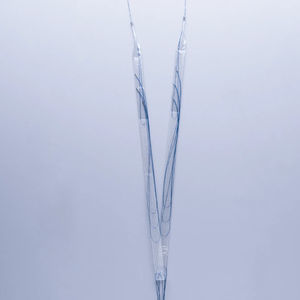
- Secondary care
- Urology
- Laparoscopic approach reconstruction mesh
- AMI - Agency for Medical Innovations
Pelvic floor reconstruction reconstruction mesh ProGYNiouslaparoscopic approachwomen
Add to favorites
Compare this product
fo_shop_gate_exact_title
Characteristics
- Mesh type
- pelvic floor reconstruction
- Surgical technique
- laparoscopic approach
- Patient type
- women
Description
Surgical treatment (laparotomy or laparoscopic approach) of pelvic floor prolapse.
Treatment of Pelvic Organ Prolapse
Pre-shaped mesh prosthesis for sacrocolpopexy.
For anatomic reconstruction of female pelvic floor prolapse.
Made of two types of polypropylene mesh material
Mesh body: Ultralight, monofilament, polypropylene mesh with hexagonal structure to reduce foreign body tissue reaction and allow good integration into human tissue. Hexagonal structure maintains vaginal elasticity and function.
Mesh neck: Made of firmer, denser mesh material for a strong fixation at level of sacral promontory.
Features
Implantation via laparoscopic or transabdominal (open surgery) approach.
Implant is a combination of ultralight, large pore, soft, iso-elastic mesh at the vaginal level and a denser, less elastic mesh for firm suspension.
Benefits
Can successfully cure patients with pelvic organ prolapse.
Low rates of erosion in a 3-month follow-up period (< 3%)
Low rates of severe postoperative pain in a 3-month follow-up period (< 3%)
Very low rate of intra-operative complications (<0.5%)
Functioning principles of ProGYNious
Sacrocolpopexy and Sacrocervicopexy
Anterior mesh is placed between vagina and bladder to prevent from recurrent cystocele
Posterior mesh is placed between vagina and rectum to prevent from recurrent rectocele
ProGYNious has an apical component for level 1 suspension to prevent vaginal prolapse
The lightweight hexagonal-shaped wide-pore structured mesh material is used for the mesh body, providing good tissue integration and reduction of foreign body reaction.
Catalogs
Solutions for Urogynecology
36 Pages
Other AMI - Agency for Medical Innovations products
Urogynaecology
Related Searches
- Reconstruction mesh
- Women reconstruction mesh
- Urinary incontinence reconstruction mesh
- Prolapse reconstruction mesh
- Transobturator approach reconstruction mesh
- Vaginal approach reconstruction mesh
- Morcellator
- Cystocele reconstruction mesh
- Laparoscopic approach reconstruction mesh
- Uterine morcellator
- Colpocele reconstruction mesh
- Rectocele reconstruction mesh
- Retropubic approach reconstruction mesh
- Sphincter prosthesis
- Urinary incontinence sphincter prosthesis
- Vesical sphincter prosthesis
*Prices are pre-tax. They exclude delivery charges and customs duties and do not include additional charges for installation or activation options. Prices are indicative only and may vary by country, with changes to the cost of raw materials and exchange rates.


